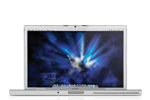

- #EARLY 2008 MAC PRO POWER SUPPLY MAC OS X#
- #EARLY 2008 MAC PRO POWER SUPPLY SERIAL NUMBER#
- #EARLY 2008 MAC PRO POWER SUPPLY INSTALL#
- #EARLY 2008 MAC PRO POWER SUPPLY PATCH#
- #EARLY 2008 MAC PRO POWER SUPPLY UPGRADE#
#EARLY 2008 MAC PRO POWER SUPPLY UPGRADE#
CPU: 2.4/2.5/2.6 GHz Intel Core 2 Duo, soldered in place, no upgrade options.
#EARLY 2008 MAC PRO POWER SUPPLY MAC OS X#
Mac OS X 10.6 Snow Leopard compatibility.

macOS 10.14 Mojave and later are not supported. Broadcom BCM4321 WiFi module, if present, is not supported by Sierra.
#EARLY 2008 MAC PRO POWER SUPPLY PATCH#
#EARLY 2008 MAC PRO POWER SUPPLY INSTALL#
PowerPC Macs won’t let you install OS X to a USB drive or choose it as your startup volume, although there is a work around for that. Power PC Macs running any version of the Mac OS prior to 10.4.2 cannot mount GPT volumes. Both PowerPC and Intel Macs can boot from APM (Apple’s old partitioning scheme) hard drives, which is the format you must use to create a universal boot drive in Leopard. Only Macintel models can boot from GPT hard drives. Intel-based Macs use a partitioning scheme known as GPT. This will wake up your ‘Book and restore use of the built-in display.īattery life is expected to be 30-60 minutes longer than on earlier MacBook Pro models.

To resume use of the internal display, you need to disconnect the external display, put the computer to sleep, and then open the lid. The built-in display will remain off, and the external monitor will become your only display. Your ‘Book will go to sleep, but you can wake it by moving the mouse or using the keyboard. Power up your ‘Book until the desktop appears on the external display and then close the lid. To used closed lid mode, your ‘Book must be plugged into the AC adapter and connected to an external display and a USB or Bluetooth mouse and keyboard (you might also want to consider external speakers). See our macOS Sierra page for more details and a link.Ĭlosed Lid Mode: All Intel ‘Books support “lid closed” (or clamshell) mode, which leaves the built-in display off and dedicates all video RAM to an external display. However, WiFi is not supported on this device. The Apple Remote, which had been included with previous models, is now a US$20 option.Īlthough it is not officially supported, the Early 2008 MacBook Pro can run macOS Sierra using Colin Mistr’s Sierra Patch Tool. If a second high-powered device is attached, it will behave like a normal bus-powered hub and only provide 100 mA per downstream port. Unlike pre-2007 models, where every USB port could provide 500 mA of power, only a single high-powered device can be attached to the USB ports, and software will enable one of its downstream ports to supply 500 mA of power. Note that the built-in display is only capable of 18-bit color, not the full 24-bit color you might expect. 2 GB of RAM is standard, with a 4 GB ceiling. The 2008 models use the same Nvidia GeForce 8600M GT graphics processor, but with twice as much VRAM as the 2007 model. These are the Penryn version of Intel’s Core 2 CPU: the 2.4 GHz chip has a 3 MB L2 cache (smaller than before), while the faster chips have 6 MB (50% more than before), and the new chips include an enhanced SSE4 vector engine.Īpple has also updated its notebook keyboards, which no longer have an embedded numeric keypad and have an Option key on the right side, replacing the old Enter key. The new model comes in 2.4 GHz (15″ only) and 2.5 GHz versions, along with a 2.6 GHz build-to-order option. Apple is doing it using the same trackpad, not a larger one like the MBA has.Īpple refreshed the MacBook Pro in almost every aspect – except for its looks, which is the same time tested design introduced with the first aluminum 15″ and 17″ PowerBooks. Introduced with the iPhone and brought to the Mac with the MacBook Air, it now made its debut on the MacBook Pro with the Early 2008 models. This must match or they don't always work (thanks Apple). The last 3 of 4 letters or numbers is the version number of the PSU.
#EARLY 2008 MAC PRO POWER SUPPLY SERIAL NUMBER#
It's for most Mac Pros, the problem with the power supplies is that you have to match part of the serial number as well as the part number.


 0 kommentar(er)
0 kommentar(er)
